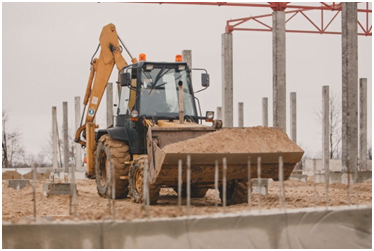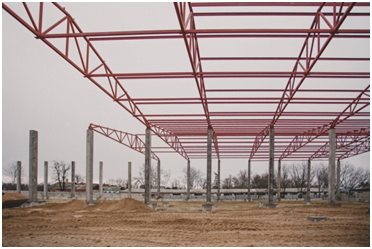Building a plant for freezing berries, fruits, and vegetables can cost an average of 5-10 million EUR. Of course, you can find ways to spend less or more, depending on the wishes of the investor.
To begin with, you need to realize that this is a big project, and after you impellent it there will be no turning back.




Why do entrepreneurs choose to invest?
There can be many reasons for investing in freezing and launching a project from scratch and there is a variety of entrepreneurs that do this:
- Farmers that invest to differentiate business;
- farmers that are forced to make a plan “B” to market the rest of fresh produce in season (although growing products for processing and systematically growing products for freezing, with an effective approach, are totally different types of business);
- farmers and other entrepreneurs convinced that processing and production is a high-margin business;
- traders from the freezing segment who decide to enter the market as producers, having a client base and an understanding of the market;
- traders that decide to refine frozen products for the end consumer, i.e. transition from the B2B format to the B2C or FMCG format (repackaging, private label, etc.);
- entrepreneurs that have land, financing, good state systems of subsidies, subventions, etc.;
- other entrepreneurs.
As in any other business, investing in a fruit, berry, and vegetable freezing plant requires a full analysis and understanding of fundamental issues:
- The availability of raw materials in the region or the ability to quickly create a raw material base (an entrepreneur’s own raw materials will almost never be enough to create a systemic business!);
- The availability and cost of labor;
- The analysis of the market and interest in your potential product – its uniqueness or competitive advantages;
- Convenience and cost of export logistics to the countries of potential customers;
- Local market analysis;
- The analysis of competitors in local and international markets, their key strengths, and success or failure stories;
- The availability of services, high-quality roads, and infrastructure around the site;
- The development of a competent master plan for the plant;
- Project implementation that takes into account international quality systems and good production practices, etc.
It is impossible to give a detailed business plan, consider all aspects and analyze all the risks in an article, so we will focus on the worst decision about investing in freezing: faith in a high-margin business.
The biggest and very common mistake is positive expectations from the project and misunderstanding or ignoring the complexities of the future operation of the freezing business.
Let’s suppose the maximum number of issues was considered and the construction was completed successfully. What’s next?
Someone must want to bring and sell you raw materials. Your task is to freeze and sell profitably, get your profit, and relax in the off-season. The scheme seems clear at first glance.
In reality, it is usually quite different: you came to the factory at the beginning of the season, and what? There are several blocks of questions that are unexpected for many, for example:
I. Who will agree with the farmers on the supply of raw materials? Does this person have experience in harvesting raw materials for processing and communication skills with farmers?
II. What powers does a procurement specialist have for pricing and how to assess the adequacy of prices for raw materials? Obviously, first, you need to determine the prospects for prices for finished products.
III. Who will control the quality of raw materials, and list the detailed requirements for raw materials? Is there such a raw material? And if not, which happens quite often, how to convince producers to invest in the production of such raw materials as the freezer needs?
IV. Who will deliver the raw materials and pay for the delivery?
V. Who will order and pay for packaging for raw materials, and are there any suppliers of such packaging in the country?
VI. What is the process of recycling or returning the container if it is a returnable container. How will it be accounted for?
VII. Who will work at the plant and where do the employees get knowledge on proper management, how to maintain production lines, etc.?
VIII. Who will list the requirements for product safety and quality, and who will certify production according to quality and safety standards, which is critical if you work for export?
IX. How will frozen berries, fruits, and vegetables be stored?
X. What storage quality control systems exist?
XI. Who will be in charge of sales of finished products and determine the time of implementation? How to set the price of products, and are there resources for continuous monitoring of the market for frozen fruits, berries, and vegetables?
The pricing for raw materials and finished products is very important! In your country, the price level for raw materials may be higher than in competing countries, and it may turn out that freezing this product does not make economic sense. Many still buy raw materials, freeze them, hoping for a price increase, store them for a long time, and sell them into the red.
Let’s suppose all issues were resolved and operational work began. You have organized it, but there is a problem – you get hand-cut halves of frozen plums at your factory at 0.85 EUR/kg + delivery to Europe. Serbia in Europe offers the same product for 0.60 EUR/kg, which is a failure in your calculation.
The first thought is what am I doing wrong? Where is the income? In freezing, earnings are sometimes a few cents, the correct initial construction, the proper implementation of operational work, the arrival of high-quality raw materials in the right container, the setting of the correct cost, and its further optimization.
Having positive expectations from the project, one should not forget that the market exists. Thousands of producers of different levels are working on the market: those having reputation and experience in production and sales, customized schemes, automated production, and a full package of certifications for all countries of the world, which are earned over the years. The new company has yet to spend its early years just setting up this job. This often means that you will have to work in the red for the first years, get a reputation, go through certification, and experience the first shipments and the first complaints. Alas, complaints are inevitable in this business, but it is rare to find a cost item called “reclamations” in the business plans of new enterprises.
Therefore, if there is a price of 0.60 EUR/kg for plums on the market, this does not mean that it will be paid to a beginner who has no reputation, and no one knows the quality of his products. Beginners are risky partners, and you must pay for the risk. Therefore, newcomers to the market of frozen berries, fruits, and vegetables should be ready to sell at prices below the market average, so that the client has a reason to choose the product of a new supplier, and not the old reliable, and proven one.
Wrong assessment of one’s own strengths and unwillingness to give 100% to work
Few people write complete business plans, and the project is implemented according to a very rough and approximate plan of simple actions. In practice, everything turns out to be much more complicated.
As a result, it is possible to build a good plant, but, for example, not to take into account the problems of the lack of raw materials, which will leave the enterprise without work.
Marginality in the fruit and vegetable freezing business is very low and seemingly understandable but missed things such as logistics and the quality of raw materials can be decisive for the stability of the entire business.
Also, do not forget that the freezing season does not look like it initially seems, namely:
A) Stage A. Getting ready for the season: selling the leftovers of the previous season, maintaining equipment, ordering packaging, ordering consumables, market analysis, analyzing and monitoring the weather and plans of producers in all countries, analyzing the plans of producers in your region, stimulating the development of your raw material zone (often considerable investments of time and money are needed there), analysis of current prices and pricing prospects for the new season, analysis of competitors;
B) Stage B. The season for freezing: 200% of the time goes to work, namely: determination and correction of purchase prices, analysis of the market, weather, prices of finished products, competitors’ actions, purchase of raw materials, acceptance of raw materials, freezing of raw materials, meetings with suppliers and buyers, shipments of finished products, solving problems of logistics, customs, certification, and regulatory authorities, possible complaints … and so on in a circle;
C) Stage B. Off-season: refinement of frozen products and continued freezing of off-season raw materials, sales of finished products, participation in exhibitions, constant sending of finished products to laboratories for various analyzes according to customer requirements, formation and optimization of product costs, certification, modernization, constant analysis of market, weather, prices, and actions of competitors.
It turns out that freezing fruits and vegetables is not a seasonal business! Entrepreneurs in freezing work all year round and if you do not devote all your time to the business, it will not work out. This is a full-time job that requires full involvement and constant work, as well as a presence at the plant.
If you are ready to be devoted to it, the project will have chances for successful work and development.
To be continued.
The use of the site materials is free if there is a direct and open for search engines hyperlink to a specific publication of the East-Fruit.com website.




